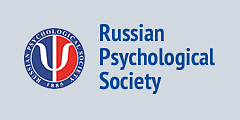Clinical psychology
-
Adverse Childhood Experiences in Mexico: Prevalence and Association with Sociodemographic Variables and Health StatusHTML4427“ CITE
Sánchez-Jáuregui, T., Téllez, A., Almaraz, D., Valdez, A., Hinojosa-Fernández, R., García-Balvaneda, H., Juárez-García, D.M. (2023). Adverse Childhood Experiences in Mexico: Prevalence and Association with Sociodemographic Variables and Health Status. Psychology in Russia: State of the Art, 16(2), 48–62. DOI: 10.11621/pir.2023.0204
copied
-
The Relationship between Perceived Infectability and Psychological Well-being: The Mediating Role of Covid-19 Anxiety
-
Medically Unexplained Symptoms among Adults from Russia: An Assessment Using the Patient Health Questionnaire-15
-
Post-traumatic Stress Symptoms, Distress, and Optimism in Mexican Colorectal Cancer PatientsPDF HTML3401“ CITE
Acevedo-Ibarra, J.N., Juárez-García, D.M., Espinoza-Velazco, A., Buenaventura- Cisneros, S., Téllez, A. (2022). Post-traumatic Stress Symptoms, Distress, and Optimism in Mexican Colorectal Cancer Patients. Psychology in Russia: State of the Art, 15(4), 127–139. DOI: 10.11621/ pir.2022.0408
copied
-
Psychological Distress, Fatigue and Quality of Life in Patients with Gastrointestinal Stromal TumorsPDF HTML4892“ CITE
Carbajal-López, E.B., Juárez-García, D.M., Sánchez-Jauregui, T.J., Espinoza-Velazco, A., Calderillo-Ruiz, G., Salas-Benavides, R. (2022). Psychological Distress, Fatigue and Quality of Life in patients with Gastrointestinal Stromal Tumors. Psychology in Russia: State of the Art, 15(2), 3-13. DOI: 10.11621/pir.2022.0201
copied
-
Existential Well-being, Mental Health, and COVID-19: Reconsidering the Impact of the Lockdown Stressors
-
The Relationship between FFMQ Mindfulness and Harmony in Life among Patients with Celiac Disease
-
The Performance of Visual Perceptual Tasks in Patients with Schizotypal Personality Disorder
-
Resource Factors Allowing People with Alcohol-addicted Parents to Overcome Their Negative Emotions: A Latent Variable Model and Content Analysis
-
Psychometric Properties of the Copenhagen Burnout Inventory in a Sample of Medical Students in KazakhstanPDF HTML13074“ CITE
Bolatov, A.K, Seisembekov, T.Z., Askarova, A.Zh., Igenbayeva, B.B., Smailova, D.S., Hosseini, H. (2021). Psychometric Properties of the Copenhagen Burnout Inventory in a Sample of Medical Students in Kazakhstan. Psychology in Russia: State of the Art, 14(2), 15-24. DOI: 10.11621/pir.2021.0202
copied
-
The Validity and Reliability of the Turkish Scale for the Assessment of Fatigue in Pediatric Oncology Patients Aged 7-18 s in RussiaPDF HTML3875“ CITE
Deviaterikova, A.A., Kasatkin, V.V., Velichovsky, B.B. (2021). The Validity and Reliability of the Turkish Scale for the Assessment of Fatigue in Pediatric Oncology Patients Aged 7-18 s in Russia. Psychology in Russia: State of the Art, 14(1), 39-48. DOI: 10.11621/pir.2021.0104
copied
-
Fixed Forms of Behavior as Excessively Rigid Behavior in Normal and Pathological Individual and Group Systems
-
Elaborating Screening Scales for Early Diagnosis of Developmental Delay in Five- to Six-Year-Old Children in Russia
-
Beck’s Personality Beliefs Questionnaire: Evidence of Validity and Reliability of the Russian Version
-
Distress Screening in Russian Pediatric Oncology: Adaptation and Validation of the Distress Rating Scale
-
Validation of Emotional Thermometers as Screening Tools for Mexican Patients Undergoing Breast Biopsies
-
Task Switching in Normal Aging and Mild Cognitive Impairment: A Diffusion Model Analysis of Reaction TimesPDF HTML4317“ CITE
Velichkovsky, B.B., Tatarinov, D.V., Khlebnikova, A.A., Roshchina, I.F., Selezneva, N.D., Gavrilova, S.I. (2020). Task Switching in Normal Aging and Mild Cognitive Impairment: A Diffusion Model Analysis of Reaction Times. Psychology in Russia: State of the Art, 13(2), 109-120.
copied









